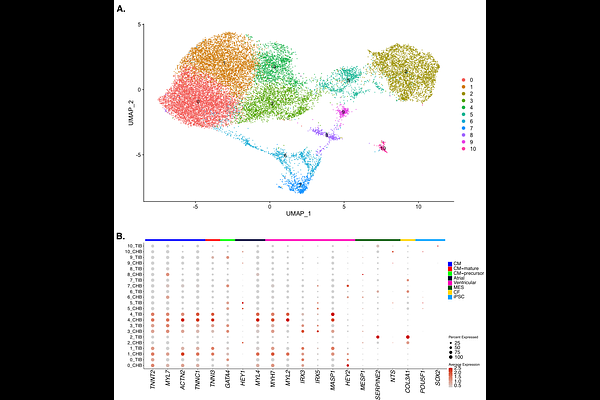Comparative transcriptomics of iPSC-derived cardiomyocytes in a high and a low altitude population

Comparative transcriptomics of iPSC-derived cardiomyocytes in a high and a low altitude population
Gray, O. A.; Witonsky, D. B.; Di Rienzo, A.
AbstractTibetan adaptation to high-altitude hypoxia remains a classic example of Darwinian selection in humans. To identify adaptive traits that might have evolved in Tibetans in response to long-term exposure to hypoxia, we previously established a library of induced pluripotent stem cells (iPSCs), derived from Tibetan and Han Chinese individuals, as a robust model system for the exploration of condition-specific molecular and cellular responses. We used this system to characterize and compare the transcriptome of iPSC-derived endothelial cells and found that angiogenesis, energy metabolism and immune pathways differ between the cell lines from these two populations. Here, we harness the same experimental system to characterize and compare the transcriptome of iPSC-derived cardiomyocytes in Tibetan and Han Chinese in hypoxia. We find that several pathways, such as the hypoxia, myogenesis and glycolysis pathways, are significantly enriched for differentially expressed genes across populations. These pathways are candidate targets of natural selection due to exposure to the high-altitude hypoxic environment and point to adaptive cardiac traits such as sustained cardiac function in hypoxia. A better understanding of these adaptations may offer insights into novel therapeutic strategies for hypoxia-related cardiovascular conditions, such as pulmonary hypertension and ischemic heart disease.